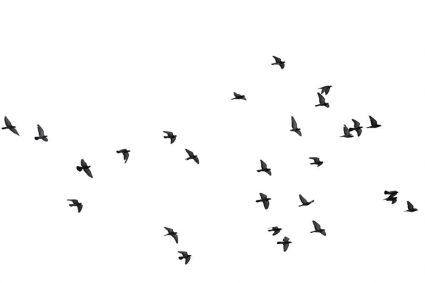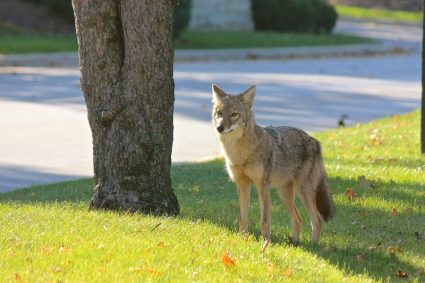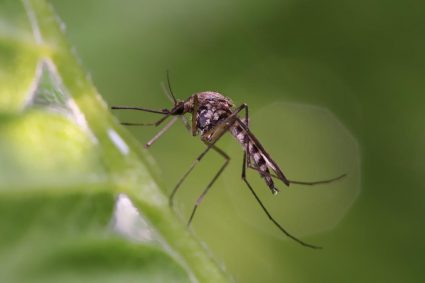
Birds, while beautiful and fascinating, can sometimes become a nuisance. Whether they’re nesting in your eaves, pooping on your patio, or eating your freshly planted seeds, there are times when you might need to discourage them from frequenting certain areas. But what is the best deterrent for birds? This comprehensive guide will explore various bird deterrent options, how they work, their effectiveness, and potential impacts on the environment.
The best deterrent for birds largely depends on the specific situation, including the type of bird, location, and local regulations. However, some effective options include visual deterrents like scarecrows and reflective tape, physical deterrents such as bird spikes and netting, and sound deterrents that mimic predator and distress calls. It’s recommended to consult with a bird control expert to determine the most effective solution for your particular scenario. Always consider the potential environmental impact and opt for humane and eco-friendly deterrent methods.
Types of Bird Deterrents
There are several types of bird deterrents available in the market, each with its own method of operation and suitable for different bird species and environments. They can be categorized into three main groups: visual deterrents, physical deterrents, and sound deterrents.
Visual Deterrents
Visual deterrents are designed to scare birds away by creating a visual distraction or mimicking predators. Examples include scarecrows, life-size models of natural predators, reflective tape, and shiny objects. These deterrents are generally easy to install and affordable. However, their effectiveness may decrease over time as birds become accustomed to them.
Physical Deterrents
Physical deterrents create a physical barrier preventing birds from landing or roosting in specific areas. Common physical deterrents include bird spikes, bird wire, and bird netting. These deterrents are often used in urban areas to protect buildings and monuments. However, they may not be suitable for all locations and require regular maintenance to ensure their effectiveness.
Sound Deterrents
Sound deterrents use audio noises, such as predator and distress calls or loud and unexpected noises, to scare birds away. These devices can be effective, but their effectiveness may vary depending on the bird species and the environmental conditions.
Factors to Consider When Choosing a Bird Deterrent
When choosing a bird deterrent, several factors should be considered to ensure its effectiveness in your specific situation. These factors include the bird species, location of the building or area you want to protect, climatic conditions, time of year, time of day, and environmental impact.
Potential Hazards and Risks
While bird deterrents can be effective, they also come with potential hazards and risks. Some deterrents can cause harm to birds or other wildlife, while others may be harmful to the environment. It’s essential to choose bird deterrent methods that are humane, effective, and environmentally friendly.
Impact on the Ecosystem
Bird deterrents can have various impacts on the overall ecosystem and other wildlife. While some deterrent methods are designed to be humane and environmentally friendly, others can have negative consequences. It’s crucial to consider eco-friendly alternatives and combine different deterrent methods to minimize the impact on the environment and other wildlife species.
Innovative Bird Deterrent Technologies
Several innovative bird deterrent technologies and methods have emerged in the market recently. These include laser bird deterrents, bird repellent gel, sensor-based bird management, IoT-based bird deterrent systems, and laser bird defense.
Bird Deterrents for Small Birds
The most effective bird deterrents for small birds include visual deterrents, physical barriers, sonic and ultrasonic bird repellents, bird repellent gels, and motion-activated sprinklers. Combining multiple deterrent methods can increase their overall effectiveness.
In conclusion, there is no one-size-fits-all solution when it comes to bird deterrents. The best deterrent will depend on various factors, including the bird species, location, and local regulations. It’s always best to consult with a bird control expert to determine the most effective solution for your specific situation.
Frequently Asked Questions
Are visual bird deterrents harmful to birds?
No, visual bird deterrents are not harmful to birds. They simply create a visual distraction or mimic predators to scare birds away, without causing any physical harm.
Can I use more than one type of bird deterrent at the same time?
Yes, you can use multiple types of bird deterrents simultaneously. In fact, combining different deterrent methods can often increase their overall effectiveness.
Are sound deterrents suitable for residential areas?
It depends on the specific sound deterrent and the local regulations. Some sound deterrents may be too loud or disturbing for residential areas. Always check local regulations and consider the potential impact on your neighbors before installing sound deterrents.
What is bird repellent gel and how does it work?
Bird repellent gel is a type of physical deterrent that creates a sticky surface which birds find uncomfortable to land on. The gel is typically non-toxic and safe for birds, but effectively discourages them from roosting or landing on the treated surfaces.
Are bird deterrents safe for other wildlife?
Most bird deterrents are designed to be safe for other wildlife. However, some deterrents, such as certain types of physical barriers, could potentially cause harm to other wildlife if not used correctly. Always follow the manufacturer’s instructions and consider the potential impact on other wildlife when choosing and installing bird deterrents.











